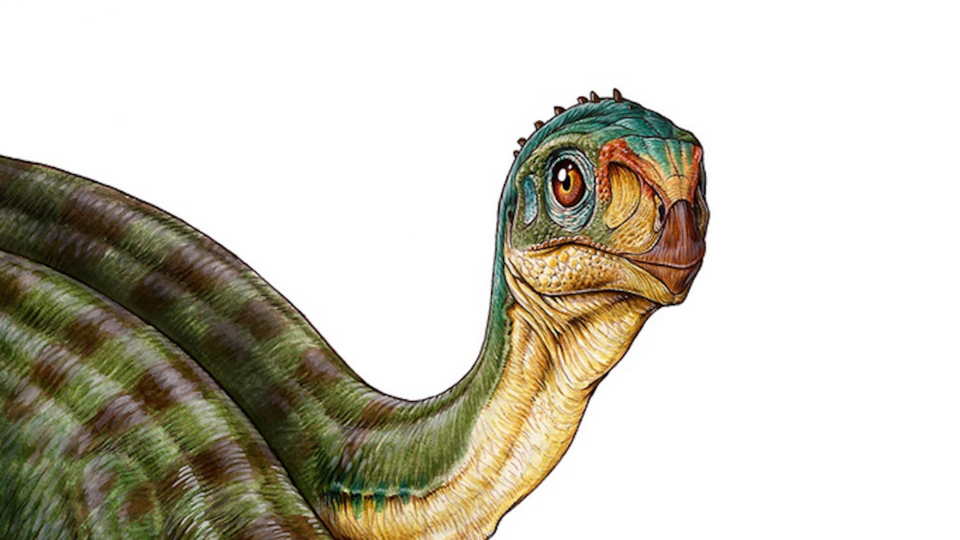Science News
T. rex’s Gentle Cousin
Theropods were the most fearsome dinosaurs of the Mesozoic. Well, maybe not most fearsome, but definitely the dominant predator of terrestrial ecosystems 252 to 66 million years ago. We’re talking T. rex and Velociraptor here.
And then there’s Chilesaurus diegosuarezi, a theropod of a slightly different ilk. Three meters (almost ten feet) long, it was likely bipedal and possessed relatively short arms, a long neck, small head, and leaf-shaped teeth. Aside from its large size, it was kind of sweet-looking, as depicted in the illustrations above. It roamed the planet around 150 million years ago, and its remains were discovered in 2004 in Chile’s Toqui Formation.
How is it different? Argentinian scientists, publishing their findings today in Nature, have also determined that Chilesaurus was an herbivore. This is very unusual for theropods, which were almost always carnivores. There are some exceptions, but only in highly derived groups that showed up on the scene much later than C. diegosuarezi. Scientists have never seen vegetarianism in such a primitive species. The species also seems to be isolated to southern South America, “suggesting an outstanding case of endemism among otherwise relatively cosmopolitan worldwide Jurassic dinosaur faunas,” according to the paper.
Its name originates in reference to Chile and to honor Diego Suárez, who at the age of seven, found the first bone remains in the Toqui Formation. As the authors point out, this unusual dinosaur discovery highlights how much we still have to learn about the evolutionary history of dinosaurs.
Illustrations: Gabriel Lío


